Home Care + Maintenance
FIRST, SOME GENERAL CARE…
- Use a soft, damp, lint-free cloth for everyday maintenance
- Avoid harsh chemicals that will deteriorate finishes and materials
- Protect surfaces and flooring finishes by using felt pads, and/or rubber furniture cups
- Avoid placing furnishings in direct sunlight (or opt for additional UV protection)
- Rotate furniture cushions periodically for balanced use
- Rotate area rugs for balanced wear
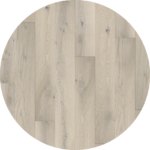
WOOD CARE
Quality wood furniture is an investment expected to last for generations. To maintain its beauty and prolong its lifespan, wood furniture needs the right care.
The finish protects the wood and adds to its beauty. While there is no indestructible finish, proper care will ensure it will outlast.
Cleaning
Clean wood furniture surfaces by rubbing in the direction of the grain. Our furniture vendors recommend polishes because they contain detergents, emulsifiers, and mineral oil.
The detergents clean dirt from the furniture, the emulsifiers give it body to clean and last longer, and the mineral oil acts as a barrier to dirt and moisture.
Polish your furniture approximately every six months using a clean, soft, lint-free cloth rubbing in the direction of the grain. Once a year, apply a coat of Tried and True Danish oil.
Our furniture vendors also recommend avoiding silicone cleaners and waxes. Silicone cleaners create high-sheen but it seeps into the finish, creating a barrier that will not accept stain or lacquer.
Waxes should be avoided because regular use may result in a build-up of wax film on the surface of the furniture which could attract dirt.
Dusting
To prevent scratches, dust with a clean, dry, lint-free cloth. Furniture with a high-gloss finish requires extra care to prevent dust and smudges from being overly apparent.
Be especially careful to avoid scratching high gloss finishes by using a feather duster or very soft, clean cloths and wiping with minimal pressure.
Protection & Prevention
To protect surfaces, always use drink coasters and placemats. Wipe up any spills immediately—water spills that sit too long can cause white spots.
Use protective pads under hot dishes. Cover the bottoms of all tabletop accessories with felt pads.
For wood flooring, all furniture that sits on the floors should get felt pads added before use.
Do Not Expose Wood to Extreme Changes in Humidity
Avoid placing wood or furnishings in direct sunlight (UV window film is a great way to safely let the light shine in).
Avoid extreme changes in temperature by arranging furniture away from radiators, heat, air vents, or air conditioning units.
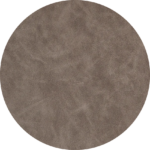
UPHOLSTERY + LEATHER CARE
Any product or technique should always be tested on an inconspicuous area before attempting overall cleaning. Always blot stained areas to prevent further spread first with a dry then a warm damp cloth.
For stains, use a drop of Dawn Dishsoap on a warm damp cloth and pat gently. For larger, more stubborn stains use a professional cleaning service like Chem-Dry of Boulder, or Fiber-Seal fabric care system.
To care for and maintain upholstery, vacuum your furniture using the soft brush attachment to prevent dust and other debris from becoming embedded in the fabric and rotate cushions as necessary.
To maintain your leather upholstered furnishings, dust or vacuum frequently with an upholstery attachment regularly. To remove soil or stains, take a lightly dampened cloth and use a mild solution of non-detergent soap and water to gently wipe the stained area.
Do not rub and do not use furniture polish, saddle soap, oils, varnishes, ammonia water, or harsh soaps. Let dry naturally and repeat if necessary.
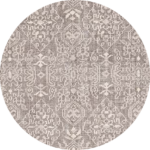
CARPET CARE
Vacuuming
When it comes to vacuuming your carpeting, canister vacuums without beater bars are the optimal type of vacuum to use on rugs. For upright vacuums, use the handheld attachment whenever possible or turn off the vacuum’s beater bar.
To protect the edges of the rug, refrain from running the vacuum over the edges of the rug or the rugs. Instead, use the handheld attachment or carefully place the vacuum on the rug.
Cleaning Spills
Clean spills immediately as once a stain sets in, it becomes more difficult to clean. Blot spills with a dry cotton cloth or a clean paper towel. Work from the outer edges of the spill towards the center to prevent spreading.
Never rub a spill as this forces the spill deeper into the rug. To remove any residual staining, dampen a cotton cloth or clean paper towel with clean, cold/lukewarm water. Gently blot with the damp cloth and quickly absorb the moisture on the rug.
Carpet Care Based on Material
- Wool / NZ Wool
Mix a small amount of Dawn dish soap with cold water to help remove stains; regular vacuuming will help to curtail shedding sooner. - Polypropylene / Olefin / Polyolefin
Mix a small amount of Dawn dish soap with cold water to help remove stains. - Polyester / Acrylic / Poly Acrylic / Nylon
Mix a small amount of Dawn Dishsoap with cold water to help remove stains. - Jute / Seagrass / Sisal
Regular vacuuming will help to curtail shedding sooner. - Viscose / Tencel
Never clean these rugs with water or any other liquid. - Rope / Jute
Lightly brush or vacuum the material regularly to avoid dirt build-up and debris. Wash occasionally using 15:1 lukewarm water and mild detergent solution. Wipe and brush in the direction of the weave to reduce friction.
Note: Some fibers such as Viscose and Tencel rugs should never be cleaned with any water or liquid.
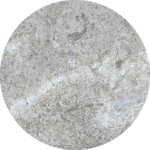
STONE CARE
For slabs or tiles, stone experts recommend using a PH-neutral stone cleaner such as Miracle brand cleaner on all stone, marble, and granite. Use mild, non-abrasive detergent and water to remove stains from Marble.
Our favorite stone cleaner is Method Daily Granite Cleaner which is plant-based, non-toxic, has no harsh chemicals, and is cruelty-free.
Quartz counters can handle a stronger cleaner, and we recommend Method All-Purpose spray for daily cleaning and Bar Keepers Friend (and for white quartz Soft Scrub with Bleach) for weekly cleaning and stain removal.

STAINLESS STEEL CARE
Care for your stainless steel appliances and kitchen sinks with this favorite eco-friendly stainless steel cleaner: Method Steel for Real cleaner. Spray on your appliance and wipe away clean with a microfiber cloth. For optimal results, wipe away in the direction of the brushed stainless steel finish.
The most convenient stainless steel cleaner is the Weiman Stainless Steel Cleaner Wipes which allow you to clean and wipe with one sheet.
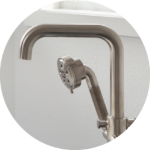
PLUMBING CARE
We recommend Flitz or Faucet Brite and Decorative Finish Polish for Kitchen and Bathroom decorative fixtures and faucets that are Stainless Steel, Chrome, or Brass metal finish (read bottle for specific metal finishes). It effectively cleans dirt, water spots, and scratches. Use a microfiber cloth for optimal results.
For metal, plastic, and fiberglass finishes use Flitz Liquid Polish which removes rust, tarnish, and stains while polishing your fixtures.

GLASS CARE
The best product we’ve found is the Invisible Glass Cleaner for all glass surfaces such as dining tables, painted glass, stained glass, antique mirrors, and bronze mirrors. To preserve the longevity of the glass, use ammonia-free products.
To remove stains from glass, mix 3 parts vinegar and 1 part ammonia onto the stained area and let stand for 30 minutes to overnight, depending on the severity of the stain. Wash off with soap and water followed by a glass cleaner.
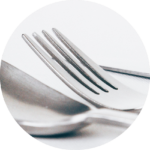
COOKING, DRINKING & EATING ITEMS
For kitchen cleanup, I remain devoted to Dawn Dishsoap. Works like a charm cutting grease and creating shine. To avoid those unsightly spots on your silverware and glassware, use Cascade dishwasher tabs; the all-natural cleaning products simply will not remove those spots.
For wood cutting boards I recommend warm water and soap to clean. But to keep them solid strong and around long, get in the practice of weekly conditioning with Boos Lock Mystery Oil and Cream.
